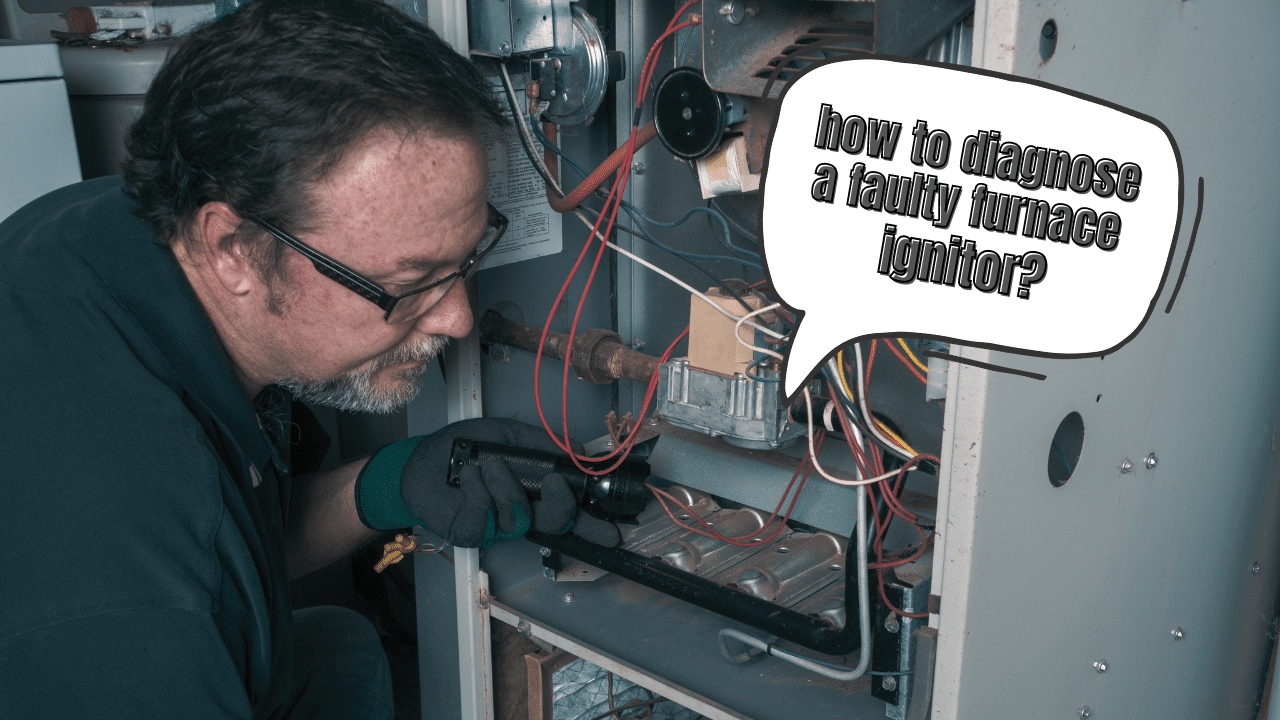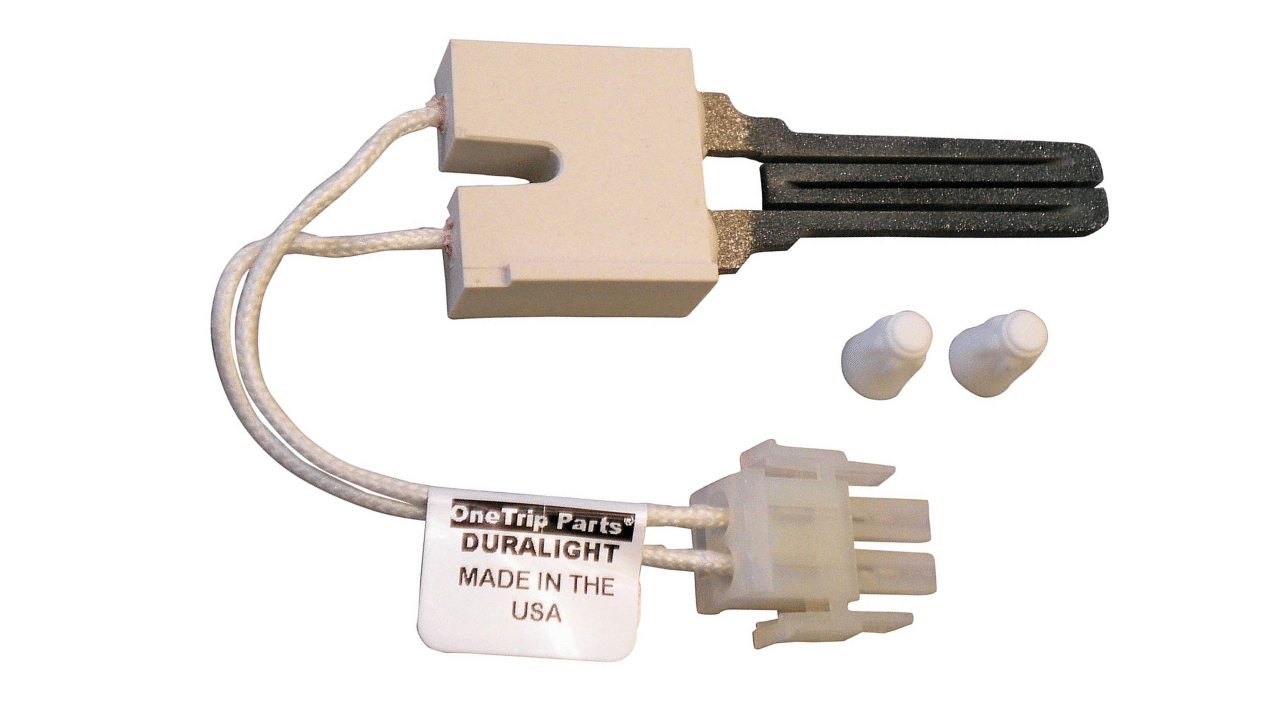Dealing with furnace problems at present? If you’ve ever found yourself in these scenarios: the furnace doesn’t turn on, the furnace claims to be powered on but doesn’t light all the way, the furnace doesn’t blow warm air the furnace starts but suddenly halts, and it consistently trips breakers in the home.
Then, the furnace ignitor is most likely the culprit behind your problems. Not all hope is lost, however. Once you confirm the furnace ignitor is the part that’s broken– this can be a cheap and easy repair.
How to Test if Your Furnace Ignitor is Bad
First off, furnace ignitor problems start with no heat. This can be a significant inconvenience in the middle of the winter months. So, if you want to diagnose a faulty furnace ignitor, here are the steps you need to follow. (Related: Replacing And Repairing Furnaces: How To Keep The Heat Alive Longer)

1. Gather the Right Tools
You will need a set of tools to diagnose the performance of your furnace ignitor.
2. Turn off all Power to the Furnace
A word of caution: your safety always comes first. Before inspecting your furnace ignitor, ensure that the furnace power switch is off or simply– turn off the furnace!
3. Remove the Furnace Doors
This part may vary from one furnace unit to another. Keep in mind that different furnace doors may be opened in various ways; some slide off while others have knobs or screws.
4. Return Power to the Furnace
Once the access panels are out of the way, you’ll need to turn the power back on to your furnace to observe what’s going on visually.
Important Note: As much as possible, avoid touching the furnace directly if the power is turned on.
Here’s a handy list of the essential questions you need to keep in mind.
Does the inducer motor turn on?
Your inducer motor should turn on within approximately 10 seconds after reconnecting power to the furnace if the thermostat is set to call for heat. You will hear the fan blowing within the inducer motor, a motor-driven fan inside a metal box.
Does the gas valve open?
Another 10 – 20 seconds after the inducer motor turns on, you should hear a loud “click,” which indicates the gas valve has opened (you have likely listened to this click in your home in the past). You will hear a loud “click” for another 10 to 20 seconds after the inducer motor switch on, which indicates an opened gas valve.
Is the gas running?
Soon after the gas valve opens, you will be able to hear the gas working its way through your furnace and usually can be determined by a hissing sound.
Is the furnace ignitor heating up?
You will know if it is working correctly when the furnace ignitor starts to light a shade of orange.
Suppose you answer “No” to any of the essential questions above. In that case, the furnace ignitor may not be the culprit of your furnace troubles. The cause of the problem might be something else.
But, if you answer “Yes” to any of these questions– the ignitor may be the cause of your woes, especially if it is not heating up. As such, turn the power off again and proceed to the next step.
5. Disconnect the Ignitor from the Furnace
Disconnect the wires that connect the furnace to the ignitor. Standard hot furnace ignitors have two wires attached to a connector. Just ensure the power to the furnace is turned off before you meddle with any of the wires.
6. Test the Furnace Ignitor with a Meter
After ensuring the ignitor is disconnected, it’s time to turn on the furnace power back. Then, you’ll need to test the voltage going through the ignitor.
Set the meter to the volts setting and place the meter leads inside the plug (that’s just disconnected). But, be careful not to force the leads into the plug. This may only cause damage to the connectors.
Ideally, you should see 120 volts coming into the meter– this indicates the furnace is working under normal conditions, and the furnace ignitor is probably the root of the problem. Before proceeding with the next step, turn the power off once again.
7. Remove the Furnace Ignitor
Now that the power is switched off – use a nut driver/wrench/angled bit holder to unscrew the ignitor bracket from the furnace. Keep in mind that the ignitor is a fragile part. Therefore, you must avoid accidentally bumping the ignitor against the furnace or applying pressure onto it.
It’s also discouraged to have direct contact with the ignitor (metal). Oils in your hands may transfer to the ignitor without you knowing, and it may only wear it down eventually. That said, ensure to touch only the ceramic casing or metal bracket.
8. Inspect the Furnace Ignitor
Lastly, give the furnace ignitor a thorough visual inspection. If you see any visible cracks or white streaks– these may be some telling signs that the ignitor needs urgent replacement. Take the meter leads again to touch each ignitor plug’s side. (Of course, ensure it is disconnected from all the furnace wires).
If you see electricity flowing through the ignitor, somewhere around 40 to 200+ ohms, everything’s good. But if it only registers a few (or nothing), take that as a sign that the ignitor is at fault.
Note: If the reading reaches more than 200 ohms (or higher), this may suggest a possible wearing out of the ignitor. Talk to a local technician if you can opt to have it pre-emptively replaced before things get worse.
Where to Buy Furnace Ignitor Parts
The good news is you have plenty of options to consider in buying furnace ignitor parts. A quick drive to the local hardware shop will give you what you need, along with home improvement stores such as Lowes or Home Depot.
Pro tip: It would be best to take the exact part with you to ensure you’re buying the same kind.

Sample of Furnace Ignitor (Direct Replacement For Rheem Ruud Weatherking)
However, some packages are often branded as Universal replacement parts, which may work for you. If you want to do some online shopping, here’s where you can place an order for furnace ignitor parts and have them delivered to your doorsteps.
You can browse through Universal ignitor replacements or refine your search by your preferred brands, such as Carrier or Heil.
If you are sure that the furnace ignitor isn’t in bad condition or you’re hoping to make a preemptive replacement, buying the parts online should be fine. We also strongly recommend having a spare one at home, just in case of emergencies.
Cost of Furnace Ignitor Replacement
Homeowners who attempt a DIY furnace ignitor replacement may only shell out as little as $25. However, calling a local furnace company will cost you around $80 to $200 for their professional services. You can buy an ignitor part for only $25, and the replacement process takes 10 minutes on average.
The more value-added cost comes from the professional service fee of your local HVAC technician, ranging from $80 to $150 to cover all expenses.
What to do In Case of Emergencies
Suppose your furnace fails during non-business hours, you can search for a local furnace company that operates on a 24-hour service. In that case, however, you may pay up to twice the regular service price.
It’s best to prepare your budget accordingly for emergencies like these. At the end of the day, we hope your furnace issues at hand will be solved ASAP and that it will fire again like usual after installing a new ignitor part. Stay warm!
